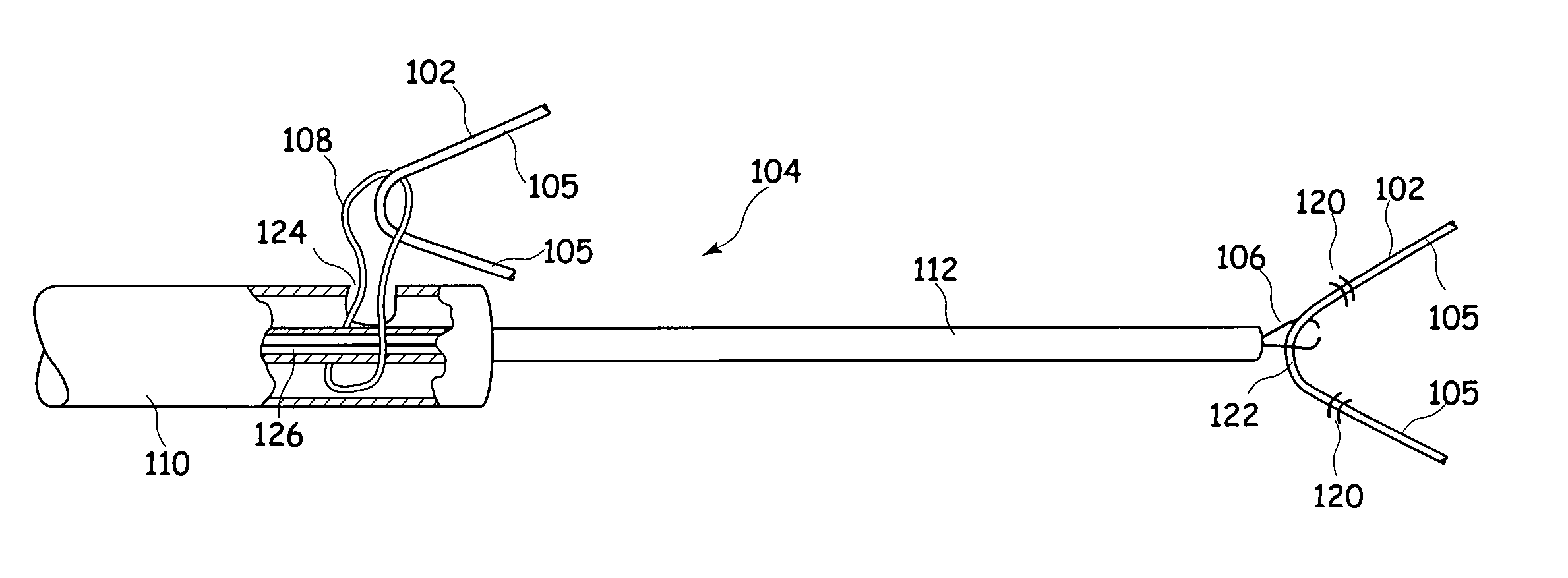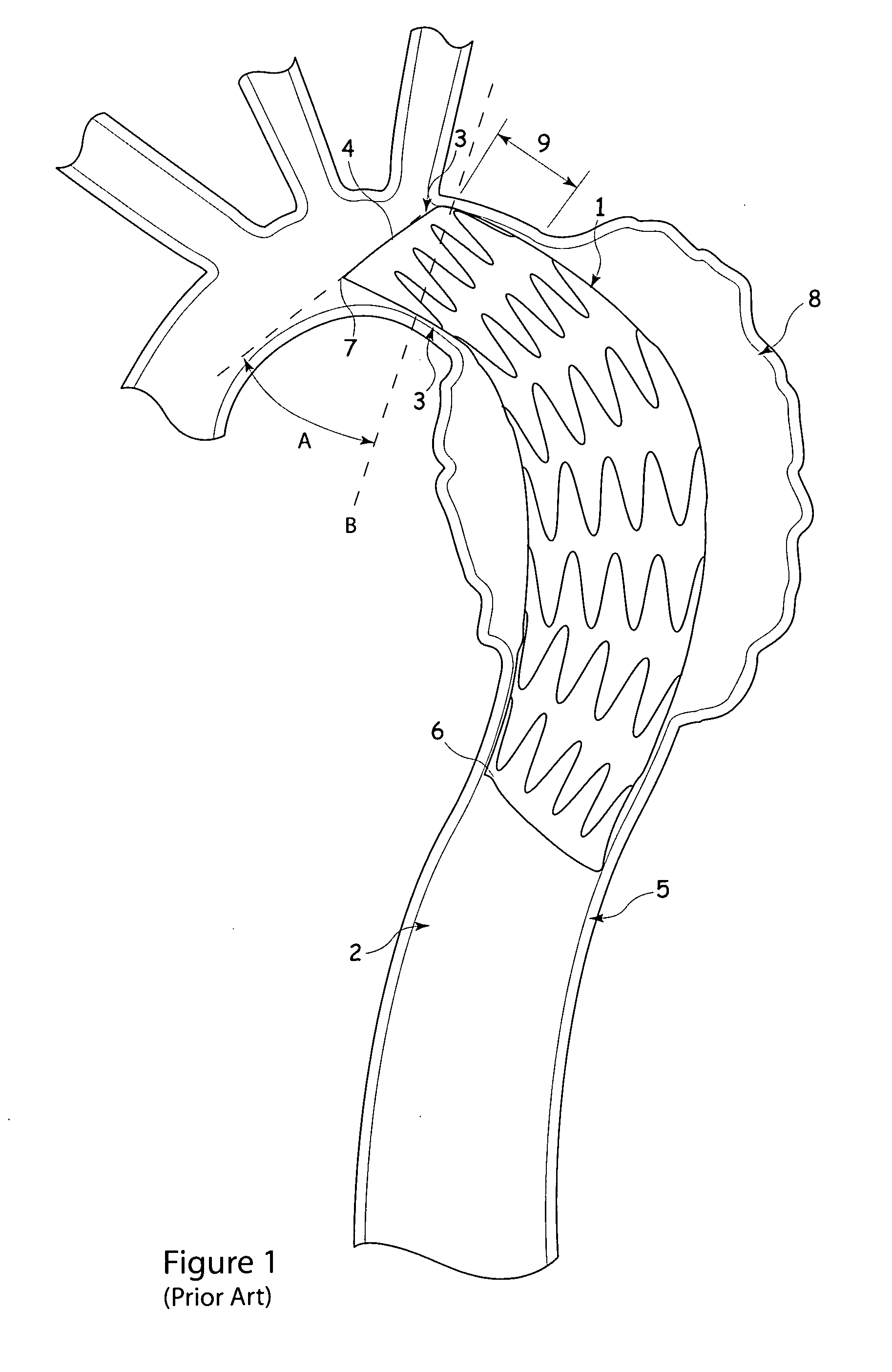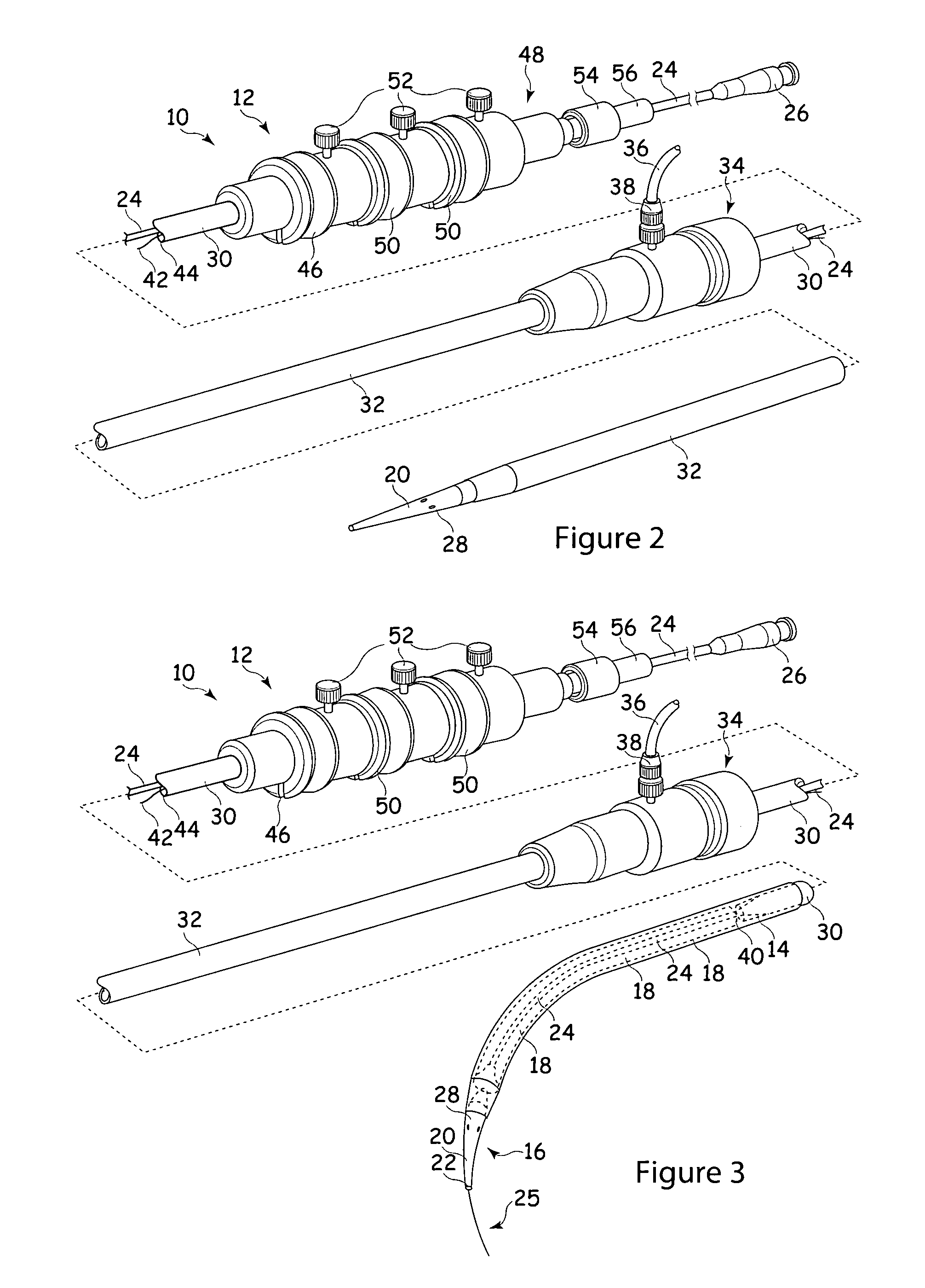Apparatus for and method of fitting a stent-graft or similar device
a technology of stent-graft and proximal end, which is applied in the field of stent-graft or similar device apparatus, can solve the problems of affecting the operation, affecting the operation, and affecting the operation, so as to achieve precise adjustment of the proximal end of the device, reduce the length of the device, and increase the separation
- Summary
- Abstract
- Description
- Claims
- Application Information
AI Technical Summary
Benefits of technology
Problems solved by technology
Method used
Image
Examples
Embodiment Construction
[0030]For the purposes of this disclosure, when used in connection with description of a stent-graft or other implantable device, the term “proximal” refers to a part or position closest to the heart, that is upstream in the direction of blood flow, while the term “distal” refers to a part or position furthest from the heart. On the other hand, when used in connection with an introducer assembly the term “proximal” refers to a position or part closest to the surgeon and typically kept outside the patient, while the term “distal” refers to a position or part furthest from the surgeon and in practice furthest into a patient during a deployment procedure.
[0031]Referring to FIG. 1, there is shown an example of deployment of a stent-graft 1 within the aorta 2 of a patient for the treatment of, for example, an aneurysm 8. In this particular example, the stent-graft extends part-way into the aortic arch 3 at its proximal end 4, down to the thoracic aorta 5 at its distal end 6. The curvatur...
PUM
 Login to View More
Login to View More Abstract
Description
Claims
Application Information
 Login to View More
Login to View More - R&D
- Intellectual Property
- Life Sciences
- Materials
- Tech Scout
- Unparalleled Data Quality
- Higher Quality Content
- 60% Fewer Hallucinations
Browse by: Latest US Patents, China's latest patents, Technical Efficacy Thesaurus, Application Domain, Technology Topic, Popular Technical Reports.
© 2025 PatSnap. All rights reserved.Legal|Privacy policy|Modern Slavery Act Transparency Statement|Sitemap|About US| Contact US: help@patsnap.com



